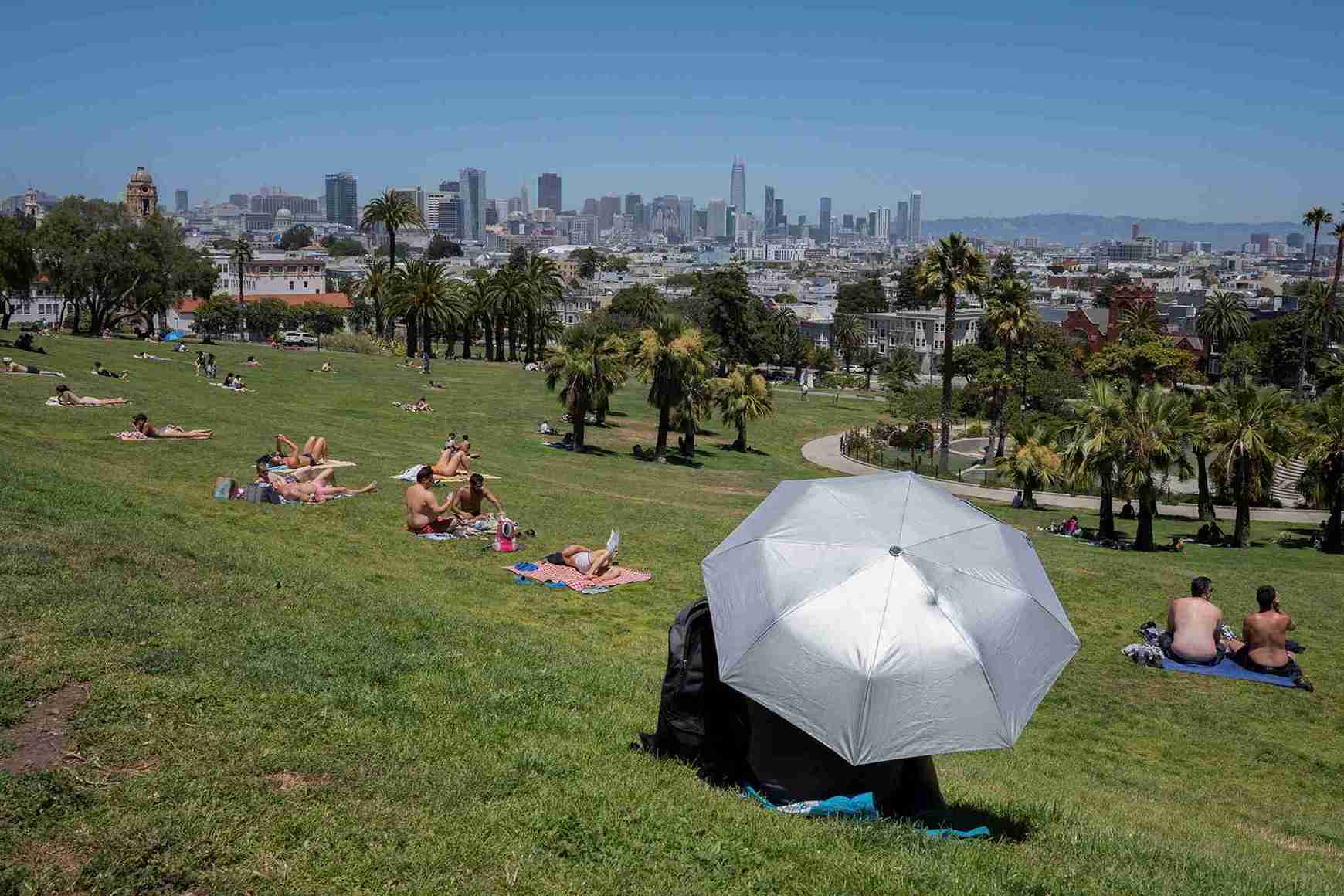Fourth of July scorcher set for a quarter of the United States
Temperatures are expected to soar well past 100 degrees Fahrenheit (38 degrees Celsius) over the next several days.
 People rest at Dolores Park during a heat wave as temperatures climb to over 80 Fahrenheit (26.7 degrees Celsius), in San Francisco, California, on July.2. / Reuters/Emily Steinberger
People rest at Dolores Park during a heat wave as temperatures climb to over 80 Fahrenheit (26.7 degrees Celsius), in San Francisco, California, on July.2. / Reuters/Emily Steinberger
(Reuters) - A huge swath of the United States will experience dangerously high temperatures on July.3 - just ahead of the long Fourth of July weekend - meteorologists said, while a fast-moving California wildfire has forced thousands of residents to evacuate their homes.
Some 110 million people in 21 states across the West, the southern Plains and the Mid-Atlantic will spend their holiday under heat-related advisories and warnings. Temperatures were expected to soar well past 100 degrees Fahrenheit (38 degrees Celsius) over the next several days, the National Weather Service said.
"It's really hot; I don't know how else to put it," said Jacob Asherman, a meteorologist with the National Weather Service's Weather Prediction Center in College Park, Maryland. "We're having excessively hot weather across a lot of the country."
The scorching weather sets in just as the country begins the Independence Day weekend, a holiday when many Americans head to the outdoors for firework displays, parades, music festivals and the like.
Portland, Oregon, where conditions are typically mild, was expected to reach 100 F (38 C) on July.5, breaking a record for the date, while in Jackson, Mississippi, known for its hot weather, the temperature was expected to reach 114 F (46 C), the service said.
When Portland native Jen Scott, a hardware store manager, was a kid, "It was a big deal if it hit 90," she said. Early July days would typically top out in the low 80s.
"But for the last few years, it's been getting extra hot. But 100 is crazy," she said. "We're not used to this."
Scott, who manages Pearl Ace Hardware in Portland, said fans and air conditioners have been flying off the shelves.
"Remember to stay hydrated, avoid strenuous outdoor activities, and make sure neighbors, relatives, pets have a cool place to spend the day," the weather service's Jackson office said on X.
In the Southwest, Phoenix was expected to hit 113 F (45 C) on July.3 and 116 F (47 C) by July.5 with little relief in sight. Last summer, Arizona's capital sizzled with a record-breaking 54 consecutive days when the temperature reached 110 F (43 C) and higher, including 31 consecutive days through July.
The brutal heat, coupled with fierce gusts of wind and low humidity in Northern California, were particularly challenging for the 500 firefighters who were battling the so-called Thompson Fire, which broke out on July.1 morning.
The unchecked blaze, which has burned 2,000 acres (809 hectares) in Butte County and the city of Oroville, forced some 13,000 residents to flee their homes, according to fire officials and media.
Photographs and video footage from the area located about 65 miles (105 km) north of Sacramento, the state capital, showed flames ripping through structures and torching vehicles.
Smoke from the fire and other blazes burning in Northern California was drifting south into San Francisco, where 7.7 million Bay Area residents were encouraged to limit driving and not set off Fourth of July fireworks due to the low air quality.

 Reuters
Reuters


.jpg)










Comments
Start the conversation
Become a member of New India Abroad to start commenting.
Sign Up Now
Already have an account? Login